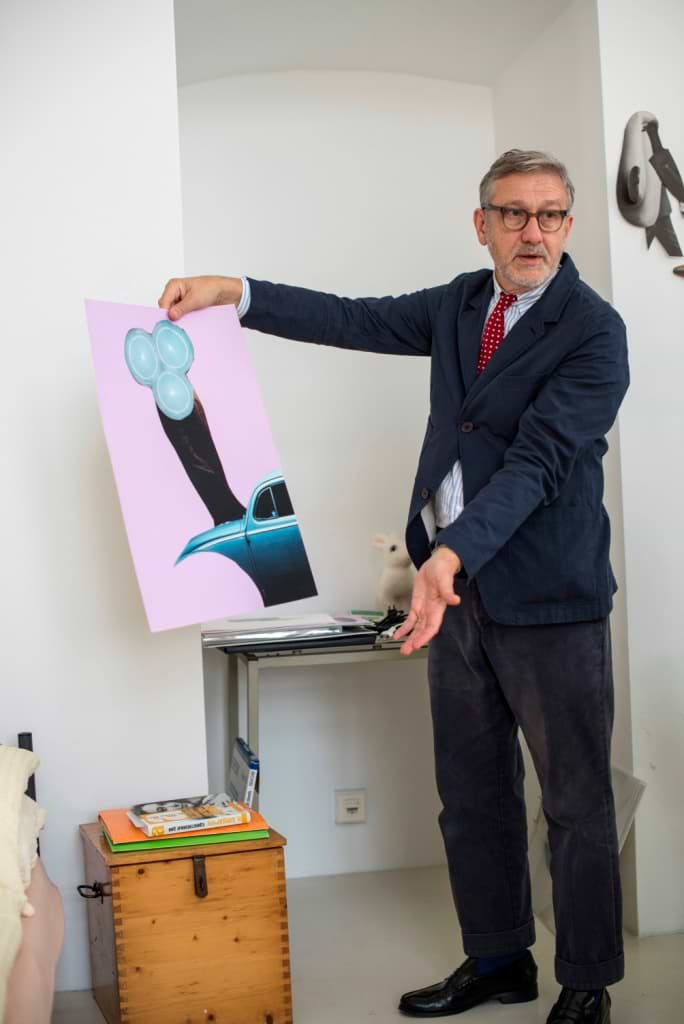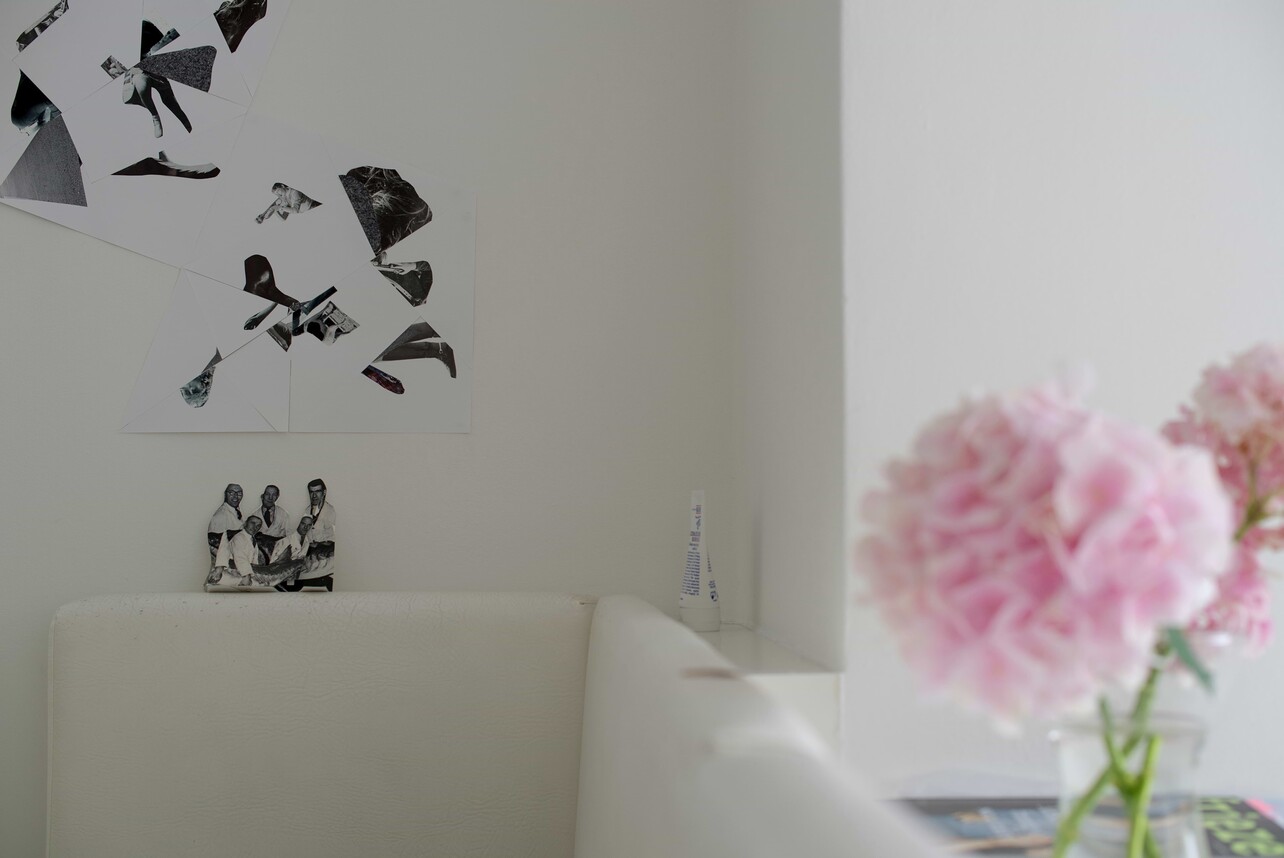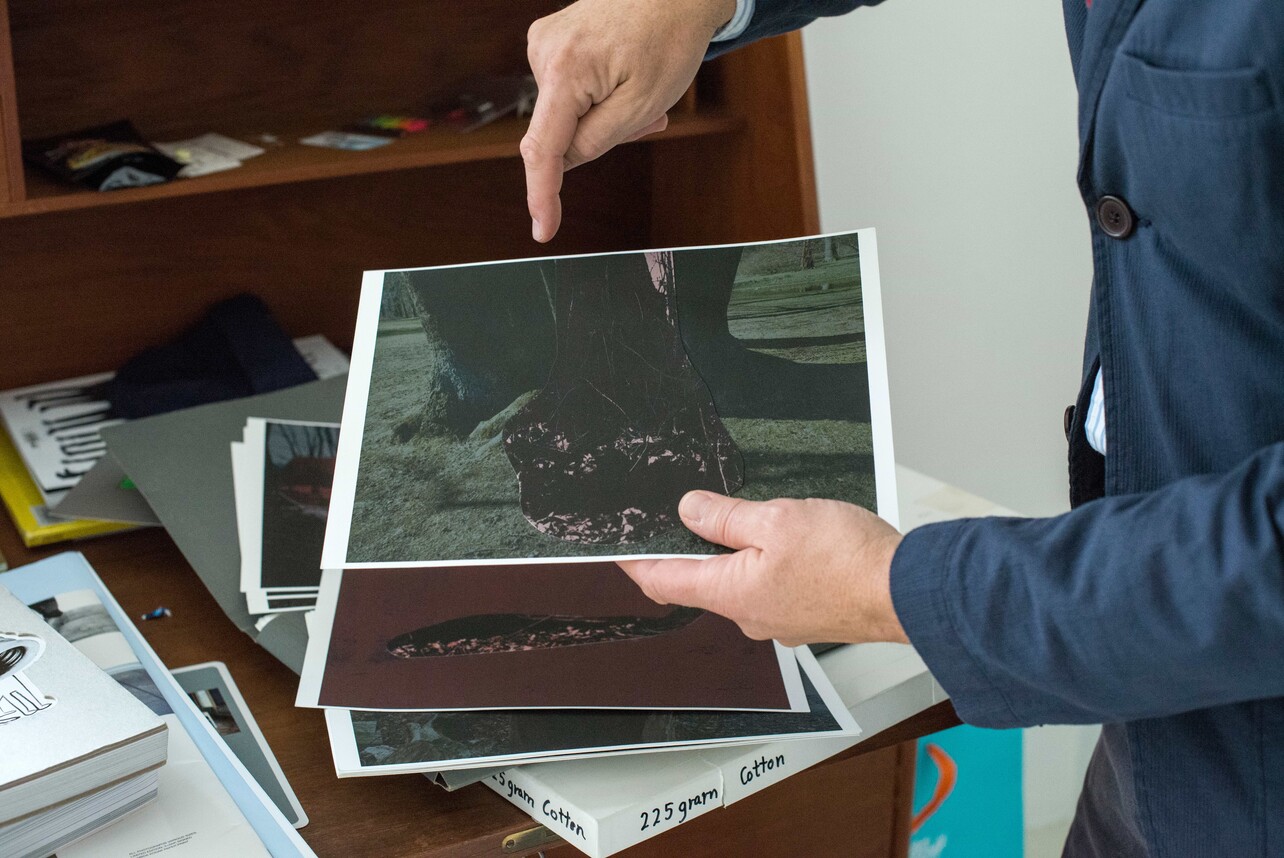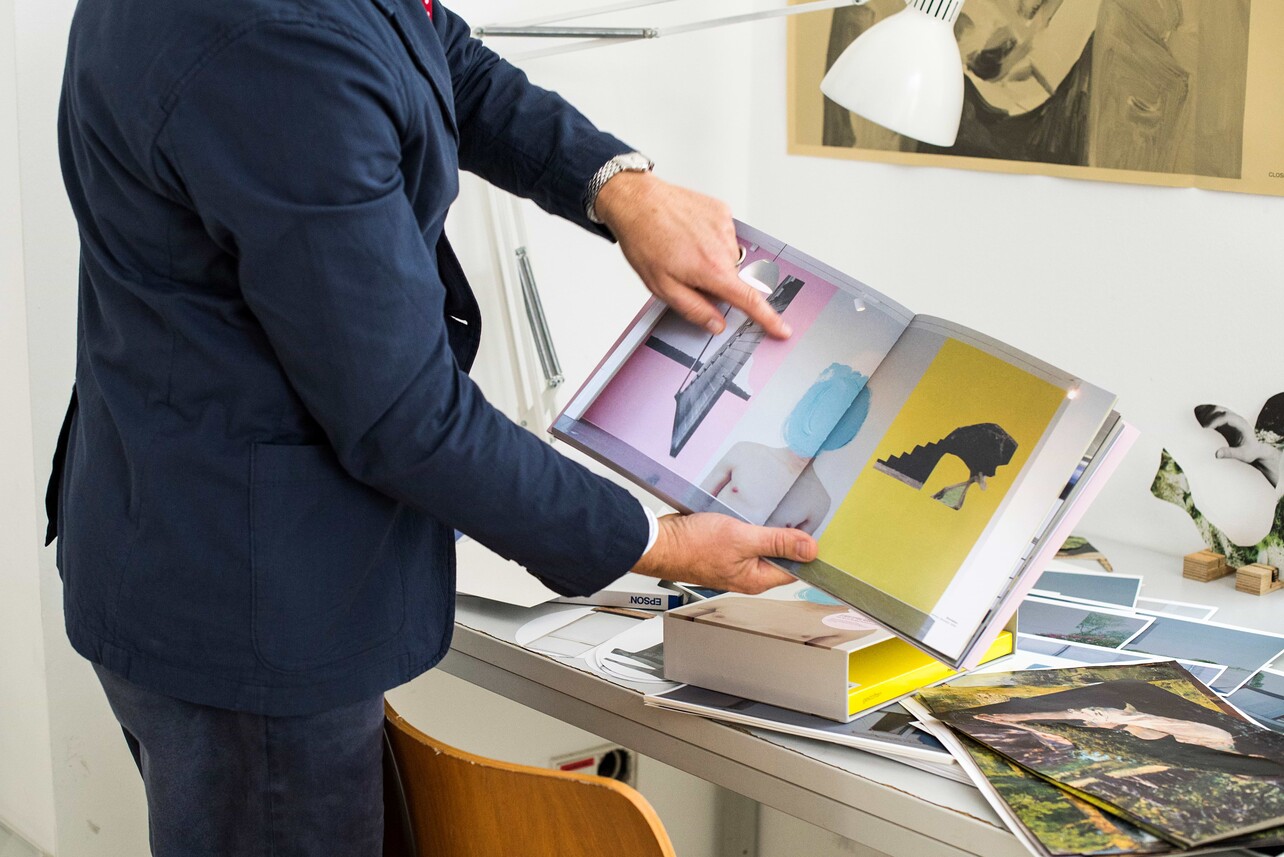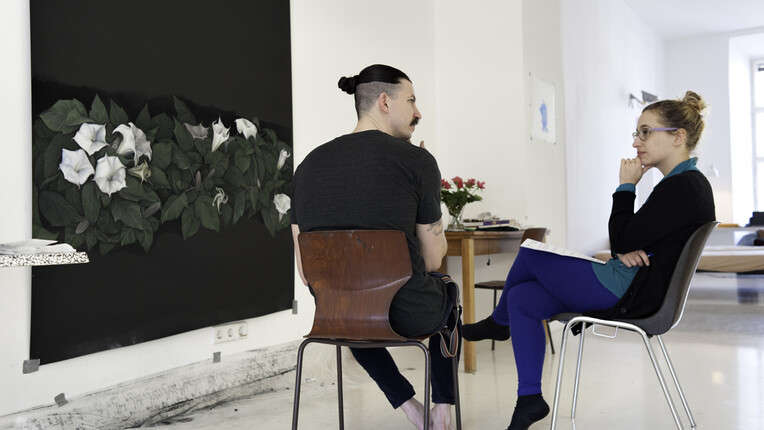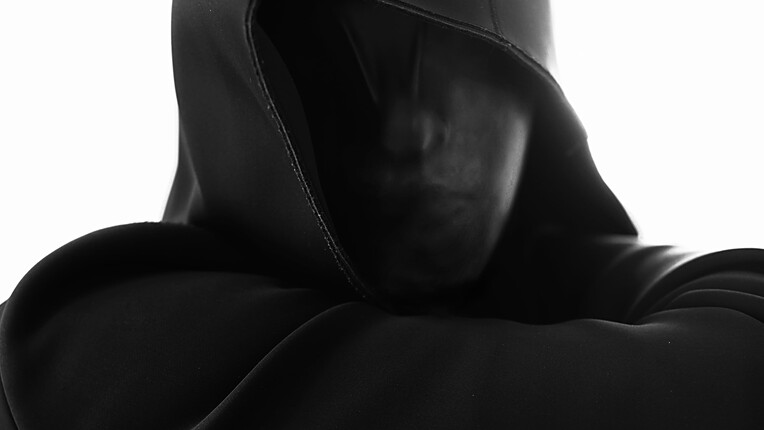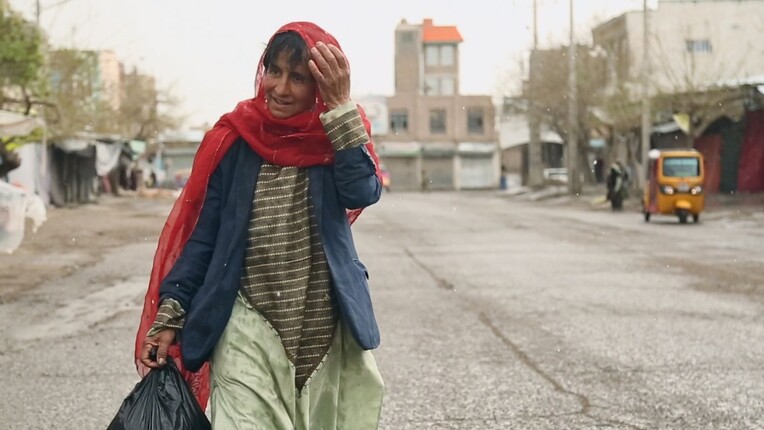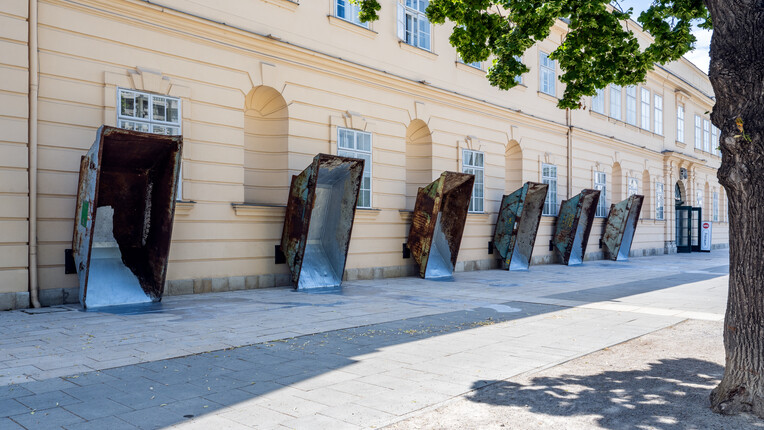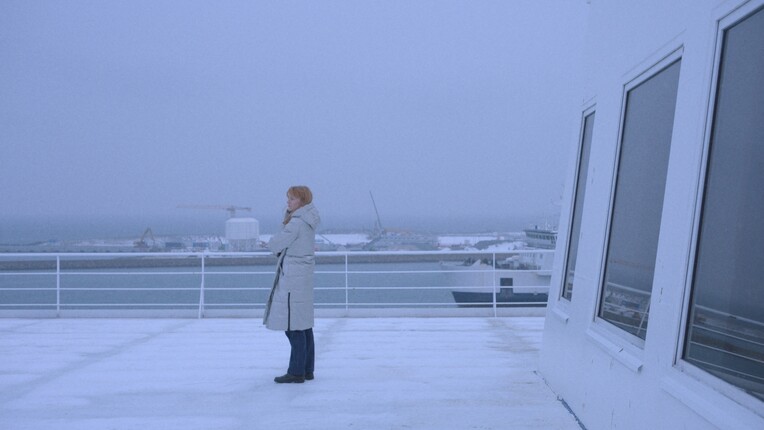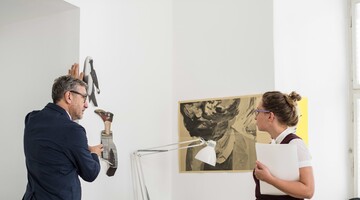
“Go for the big elements, try to combine them.”
Artist-in-Residence Sergei Sviatchenko shares advice and gives insight into his collage works.
Sergei Sviatchenko opens the door of his studio. Coffee is cooking on the stove and he’s listening to Charles Bradley. In only three weeks he has already made dozens of “Viennese” collages, which are hanging on the white studio walls. Most of them are black and white, some spots of color here and there.
Your collages are always composed of two fragments?
Mostly, yes. And sometimes they get 3-dimensional, like this one. I just follow the shape and transfer it into an abstract object.
One way to find abstraction.
Exactly.
Initially, you were an architect. Did this influence your work?
Collage is a part of my identity, like painting and making short films. But collage allows me a fast reflection of my thoughts, which other media won’t. It’s constructive, yes. So there’s a kind of connection to architecture maybe.
What you do, art critics call “modern collage”. The technique of collage is a rather old one, it has existed since the early years of the last century, correct me if I’m wrong. What makes your collages “modern”?
Collage is a part of Dada. Surrealist artists have made extensive use of collage. Today’s life is full of images, more than any time before, and my idea is to build a new reality using the known fragments. The recognizable parts should “calm” the viewer, but only enough to confront him or her with a new story. So the aim is to communicate.
Born in Ukraine, you moved to Denmark in the 90s, where you still live. You carry a lot of personal but also sociopolitical history with you.
That is true. I collect the individual stories through collective history and reflect that again individually by creating my own visual language. This language should be something unique. I would like to be completely unique. The two-part collage, the colorful backgrounds, all that is a statement.
Do you think that collage is something that is somehow close to every person? I mean when I was a child or rather a teenager I loved to do collages, just like this. It was quite easy to make them look good…
I think you’re right. Collage is the most interesting and at the same time easiest technique of art production. It empowers you to awaken your own way of thinking. I did master classes with completely different audiences. It was absolutely incredible how quickly they developed their techniques, but of course you have to be guided on how to do it, what to do and what not to do.
What is a no-go?
Don’t use advertising. Don’t use text. Go for the big elements, try to combine them. Try to surprise me! Do not use small elements. Some people start cutting out little flowers or something – forget about it. Take the main elements and try to work with them and you will start to find the communication between the elements. And if you’re able to, use your own photographs. I often work with my own photography. Collages are easy to make. Now millions of artists are starting to work with collage.
Why? Why is there a renaissance?
Maybe the time has come. The classical styles slowly return. I began to work with collage in the 70s when absolutely no one was thinking about this technique.
Was it too trivial?
Probably. They saw nothing but a work of children in it, but for me it was a kind of personal exploration. Suddenly it became en vogue. Also, I guess that many young artists think that if they cut very quickly, success will come quickly too. They think it’s easy to do, but it’s not. It’s absolutely not.
It’s easy to do but not easy to be good at it.
It’s not easy to be original.
What makes your work original?
That is difficult to say, you should ask the art critics out there. One reason might be that I present my ideas in a simple way. And I use sharp colors. A lot of collage artists are afraid to use color because they are afraid to destroy the whole composition. I’m not afraid of colorful backgrounds and I’m not afraid of big size, either.
Big size?
I think that art, when integrated very carefully into an architectural structure, can create a completely different understanding of the surrounding. I wrote a PhD thesis about this interdependence between art and architecture. I can resize this small collage here and it becomes art work filling the whole room. Such works give a completely new and dynamic atmosphere to a building.
It’s design then.
It’s still art!
But the function has changed.
Big buildings are often covered by huge images when being renovated. Sometimes they use a picture that shows what the building will look like after the work is completed, but that doesn’t provide any inspiration. Imagine something abstract instead! I have seen these projections on the MQ buildings and I find them a little bit cheap, I’m sorry to say. A building has to be physically covered by an image.
Your series “Resisting Interpretation” is obviously resisting any interpretation, but I have to think of TRIP TO THE MOON, maybe because of the special colors I know from hand colored early film. Any connections?
I’m very happy, because I just won the 2nd price on the International Photography Award 2013 with a picture of this series. There was a filmic inspiration actually, namely Tarkowski’s film SOLARIS. Instead of exploring space life, I just went to the forest and tried to transform its different aspects. The spectrum of the colors is “moonish” indeed.
Why did you choose to show this work from the series “LESS” in the FACELESS exhibition?
It was chosen by curator Bogomir Doringer. It is so laconic that it became iconic on the internet.
Speaking of the internet, do you think the renaissance of the collage comes from the flood of images we’re confronted with on a daily basis? Instead of creating a new image, cast to the millions that already exist, they combine the ones that already exist?
[Long silence.] I have never asked myself that question, but probably yes. Probably yes.
Sergei Sviatchenko (born 1952 in Kharkiv) is a Ukrainian-born artist who lives in Denmark. He is contributor to the exhibition FACELESS at freiraum quartier21 INTERNATIONAL curated by Bogomir Doringer and was Artist-in-Residence at quartier21/MQ in October 2013.
Interview: Margit Mössmer
